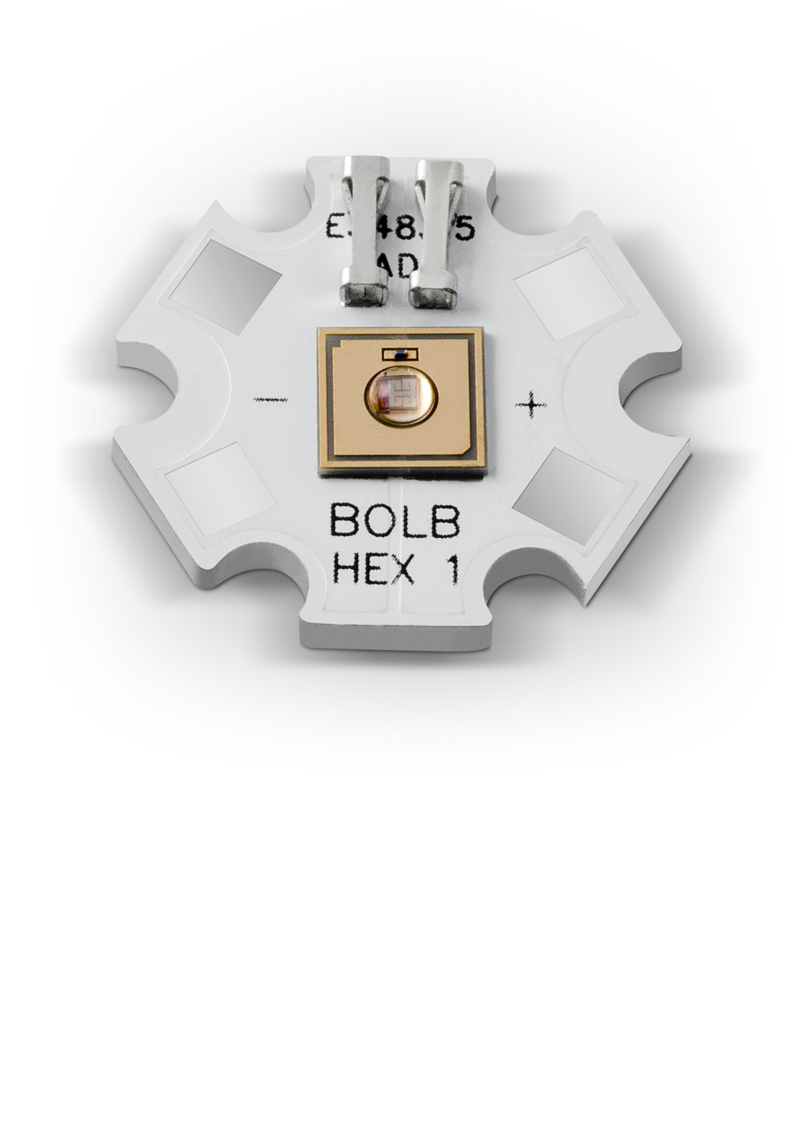UV LEDs Keep Things Fresh and Have an Antibacterial Effect
Everyone has had experience with mold at one time or another: for example, you have probably gone food shopping, brought your vegetables home, put them into the refrigerator, and brought them back out again a few days later to use for cooking just to find – mold! How was that disgusting fungus able to spread when the refrigerator is designed to keep food fresh? The answer is simple: Molds thrive even at temperatures below freezing. The refrigerator – where the temperature is cooled to between 2°C and 8°C – does not provide a threat to molds. If mold starts to form on food, the only place for it is the garbage, especially because their toxins are some of the most hazardous substances in the world.
Traditional methods, such as salting, reduce mold formation but also change the taste of food. Some food manufacturers use strong chemical substances; however, many consumers do not want their food to contain fungicides or conservatives. This is one case in which UV lighting could help. Tests have shown that mold spreads under exposure to UV lighting in the wavelength range from 220 nm to 340 nm much more slowly. In addition, the exposure also destroys some of the dangerous toxins.1 Then there is the well-known antibacterial effect: Even much-feared salmonella bacteria cannot withstand ultraviolet waves.
Many refrigerator manufacturers now offer models with UV lighting; however, you also have to be careful with certain beverages: for example, some components in beer, wine, and milk change under the influence of UV light. This results in the notorious “light taste” that makes these beverages unenjoyable. Those with a UV refrigerator should store these beverages in a way that protects them from the light. The standard brown and green bottles that wine and beer are stored in are sufficient to block UV lighting.
The visible spectrum will soon provide short-wave beams with competition. Research scientists have discovered that blue light achieves a similar effect.
1 www.heise-gruppe.de/presse/Technology-Review-ueber-UV-LEDs-im-Kuehlschrank-1897555.html
UV LIGHT Everywhere
Beyond Borders
Fruit and Vegetable Cultivation
Research scientists in the U.S.A. are testing the effects of LEDs and UV radiation on the growth of fruits and vegetables. The results: UV radiation leads to less pests, red LEDs lead to more blossoms and fruits, white LEDs lead to faster growth, and blue LEDs lead to higher yields. While NASA is currently testing this method in terms of its suitability in space, hydroponic plant kits with LED light are popular among home growers.
… and Chickens
Birds perceive the world differently than people. They not only have receptors for blue, green, and red light, but they also partially perceive the ultraviolet spectrum. The artificial light on poultry farms is commonly designed to be pleasant for chicken farmers. Scientists are currently testing what effect lighting with a larger percentage of UV radiation has on the well-being and “productivity” of laying hens.
Even Healthier
UVB radiation aids, among other things, the production of vitamin D. This prohormone plays an important role in bone development and the regulation of calcium levels in the blood. A deficiency can also lead to severe heart disease. Mushrooms that have been exposed to UVB radiation contain more vitamin D.
Oral Hygiene
UV radiation is also used in the bathroom for disinfecting; for example, there are now a whole range of devices available for disinfecting toothbrushes. Prices start at approx. 20 euros.
Sterile Baby Bottles
State-of-the-art technology is never a bad thing when it comes to the well-being of children. One U.S. company is currently developing a portable UV device to be used for sterilizing baby bottles.
They are using the same technology that hospitals already use for disinfecting.
Pain Relief
Medical science can also profit from UV technology. UVB radiation facilitates the production of cannabidiol and THC in hemp plants.6 These substances have an anti-spasmodic, anti-inflammatory, and anti-nausea effect.
Our Expert
Beyond Borders

Click here
Product Information
Beyond Borders
UV LEDs
LASER COMPONENTS Germany - Your competent partner for optical and optoelectronic components in Germany.
Welcome to LASER COMPONENTS Germany GmbH, your expert for photonics components. Each product in our wide range of detectors, laser diodes, laser modules, optics, fiber optics, and more is worth every Euro (€/EUR). Our customized solutions cover all conceivable areas of application: from sensor technology to medical technology. You can reach us here:
Werner-von-Siemens-Str. 15
82140 Olching
Deutschland
Phone: +49 8142 2864-0
Email: info(at)




